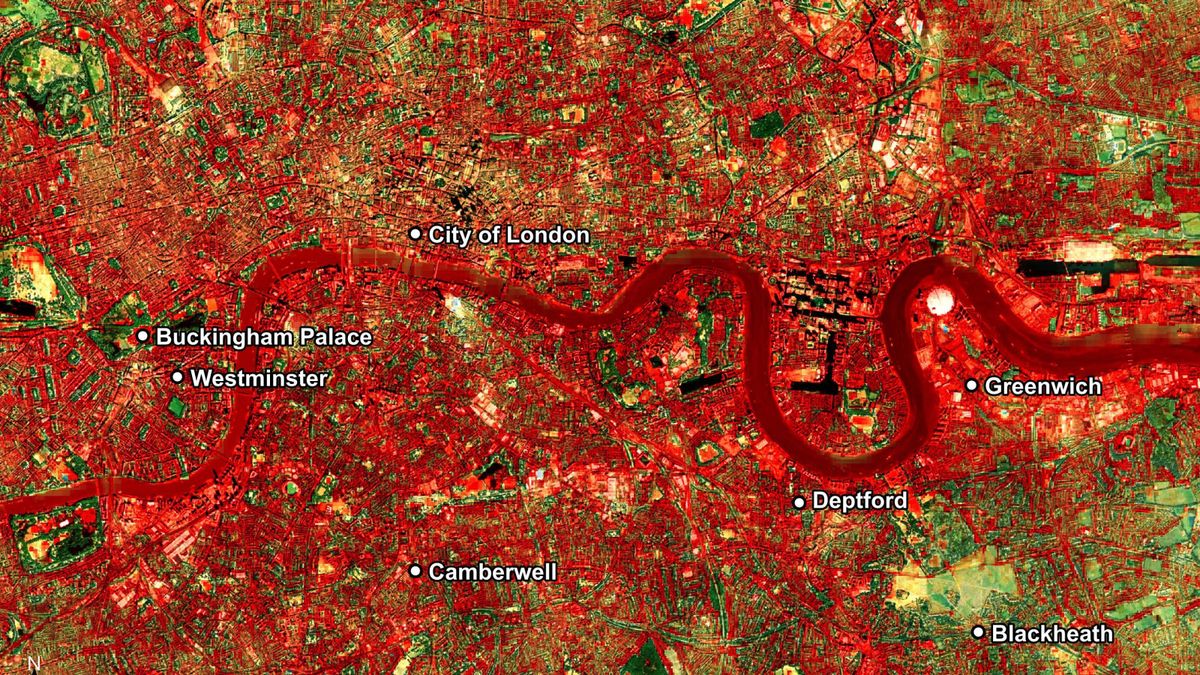Painting London’s rooftops white could help reduce the outdoor temperature of the city by up to 3.6 degrees Fahrenheit (2 degrees Celsius), according to a new study that investigated the most effective ways to cool the U.K. capital.
Climate change is expected to lead to hotter and drier summers in London, with the average summer’s day around 5.4 F (3 C) hotter by 2050. The new findings suggest painting roofs white may be one of the ways the British city can respond.
“We comprehensively tested multiple methods that cities like London could use to adapt to and mitigate warming temperatures, and found that cool roofs were the best way to keep temperatures down during extremely hot summer days,” lead author Oscar Brousse, a lecturer at University College London who specializes in urban meteorology and environmental modeling, said in a statement. “Other methods had various important side benefits, but none were able to reduce outdoor urban heat to nearly the same level.”
Like many major cities, London is in a precarious position as global temperatures increase because it’s built to absorb heat. Dark buildings, asphalt roads and underground rail networks all make it an “urban heat island,” where urban areas are significantly warmer than the surrounding rural areas. Urban planners are now looking at ways the city can adapt to ever-increasing temperatures.
Related: Is Earth really getting too hot for people to survive?
In the study, published July 4 in the journal Geophysical Research Letters, scientists looked at the most effective ways to cool the city in the face of climate change. They examined the impact of various strategies, including adding rooftop solar panels, painting roofs white or covering them with a reflective coating (known as “cool roofs”), covering roofs in vegetation, planting more street-level vegetation and the large-scale deployment of air conditioning.
To do so, they created a 3D computer model of London and ran 11 different climate simulations using the different techniques to cool the city on the two hottest days of summer 2018, when temperatures reached 95 degrees F (35 C). All simulations assumed widespread adoption of each technique.
The results showed that “cool roofs” that were painted white or covered with a reflective coating, when adopted widely, reduced the outdoor temperature by 2 F (1.2 C) on average, and 3.6 F in some areas. Extensive street vegetation and solar panels caused temperatures to fall by about 0.5 F (0.3 C), while green roofs had a negligible impact. Air conditioning may keep dwellings cool, but it warmed the outdoor temperature by up to 1.8 F (1 C) in central London.
There were several limitations to the study, including that the researchers looked only at the outdoor temperature and did not consider the costs and benefits of other interventions, such as increased biodiversity and lower indoor temperatures, the authors wrote in the study.
“Despite these limitations, we expect our results to be at the least indicative of which interventions are capable of producing the greatest cooling effect in London during hot summer days,” they wrote.


